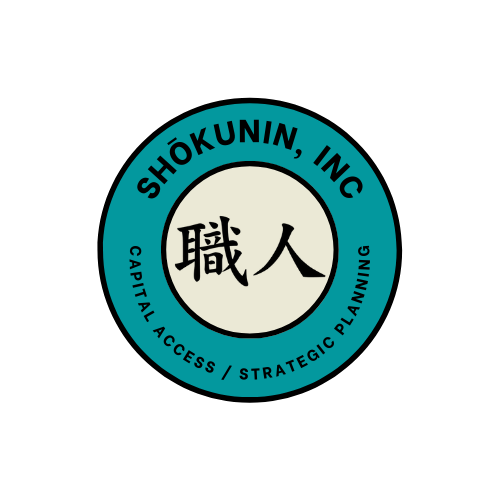Understanding financial statements is crucial for business owners to make informed decisions. One of these essential statements is the Profit and Loss (P&L) Statement, also known as the Income Statement. This document offers detailed insights into a business’s profitability over a specific period. In this guide, we’ll explore what a P&L statement includes, how to read and prepare one, and its importance, particularly when qualifying for credit decisions like an SBA loan or financial products such as BankRoll and FlexPay.
What is a Profit and Loss Statement?
A Profit and Loss Statement is a financial report that summarizes the revenues, costs, and expenses incurred during a specific period. It provides information about a company’s ability to generate profit by increasing revenue, reducing costs, or both.
What’s Included in the P&L Statement?
A P&L statement typically includes the following sections:
Revenue
This is the income earned from the business’s primary activities, like sales of goods or services. It can also include revenue from secondary activities, such as interest earned from investments.
Cost of Goods Sold (COGS)
COGS represents the direct costs associated with producing the goods sold by a company. This includes both direct labor costs and any direct materials used in producing or manufacturing the goods.
Gross Profit
This is calculated by subtracting COGS from Revenue. Gross Profit shows a company’s efficiency in using labor and supplies in the production process.
Operating Expenses
Operating Expenses include salaries, rent, utilities, depreciation, and other costs involved in the day-to-day operations of a business.
Operating Profit (EBIT)
Operating Profit, or Earnings Before Interest and Tax (EBIT), is calculated by subtracting Operating Expenses from Gross Profit. It represents the profit a company made from its operations before accounting for interest and taxes.
Net Profit
This is the bottom line of the P&L Statement, showing the company’s total earnings (or losses) after subtracting all expenses, including tax and interest expenses, from the revenue.
How to Read a Profit and Loss Statement: An Example
Consider a hypothetical business with the following P&L statement for a fiscal year:
- Revenue: $500,000
- COGS: $200,000
- Gross Profit: $300,000 ($500,000 – $200,000)
- Operating Expenses: $150,000
- Operating Profit (EBIT): $150,000 ($300,000 – $150,000)
- Interest and Taxes: $50,000
- Net Profit: $100,000 ($150,000 – $50,000)
This example shows that the company generated a net profit of $100,000 during the fiscal year. It earned $500,000 in revenue and spent $200,000 on direct costs (COGS), leaving a gross profit of $300,000. After subtracting operating expenses of $150,000, the operating profit comes to $150,000. Finally, after accounting for interest and taxes of $50,000, the net profit is $100,000.
Preparing a Profit and Loss Statement: A Simple Template
Preparing a P&L statement involves systematically documenting your revenues, costs, and expenses. Here’s a simple template:
- Revenue
- Sales Revenue
- Other Revenue
- Cost of Goods Sold
- Direct Labor
- Direct Materials
- Gross Profit (Revenue – COGS)
- Operating Expenses
- Rent
- Utilities
- Salaries
- Depreciation
- Other Operating Expenses
- Operating Profit (Gross Profit – Operating Expenses)
- Interest and Taxes
- Interest Expense
- Taxes
- Net Profit (Operating Profit – Interest and Taxes)
By filling out each of these sections, you can create a P&L statement that provides a clear picture of your business’s profitability.
The Importance of the P&L Statement for Credit Decisions
Understanding and maintaining a detailed P&L statement is crucial when applying for credit decisions such as an SBA loan, BankRoll, or FlexPay. Lenders and financial institutions review your P&L statement to assess your business’s financial health and its ability to repay the loan.
A well-documented P&L statement shows your company’s profitability trends, operating efficiency, and financial management, all critical aspects assessed by lenders. It provides assurance that your business generates sufficient profits to service the debt.
In the case of products like BankRoll, a true revolving line of credit, lenders may examine your P&L statement to determine your credit limit. For a product like FlexPay, an interest-only working capital loan, lenders may assess whether your business has the necessary profits to manage the loan repayments.
Final Thoughts
A Profit and Loss statement is more than just a reflection of your business’s profitability. It serves as a strategic tool that can guide your business decisions, help identify areas for improvement, and enhance your business’s financial health. Understanding and maintaining a detailed P&L statement can also significantly influence your ability to qualify for critical credit decisions, thereby supporting your business’s growth and success.
If you’re looking for working capital or a revolving line of credit for your business, you can apply here without affecting your personal or business credit.
Not sure if you should grow or sell your business? Attend a free webinar to pick up some tools and learn the basics of value acceleration.

